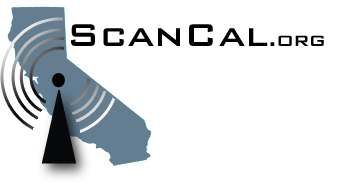
Fire Season mode
Pri1 - TGU and SHU Local Net
Pri2 - Air Tactics 5
Pri3 - Air Guard / Natl Flight Follow
Pri4 -
Pri5 -
Normal Fire Season Programming:
(additional off-season frequencies Nov through May)
CALFIRE
TGU Local
SHU Local
Tacs 1, 3, 4, 11, 12
Commands 1, 2, 7, 9
Air Ground
Air Tactics
USFS
LNF Forest
MNF Forest
SHF Forest
SHF Southfork District
Various ground tactics
Air Ground
Air Tactics
Air Guard
Air Flight Following (jumpers)
Other
Red Bluff City Net
Red Bluff City Tac 1
Red Bluff City Tac 2
Tanker Base 123.975
CESRS (travel net)
CHP Air Net
Calcord
Various Victor Nets (AM air)
Off Season Frequencies (Nov-May)
Red Bluff Police
Tehama Sheriff
CHP - Redding
Caltrans - I5 north valley
PGE (during storms)
UPRR Valley Sub
iTunes on your desktop or any favorite MP3 streaming program.
Mobile/iPhone/Tablet will work just by clicking the Listen link in your browser such as Safari, Chrome or Firefox.
Frequently Asked Questions
What do I need to hear this?
Basically any device, Windows, Macintosh, iOS or Android, Linux etc. with
a streaming mp3 audio program such as iTunes or built-in streaming on mobile
browsers can hear this. It is approx a 30kbps stream, requiring very little
data.
Why is it down!?
If the feed is down, my (free) dynamic DNS isn't working, my internet is down, or I have no power at home. Outages should be pretty rare.
What equipment are you using?
I currently have a BCT15x scanning with audio inputted into a small box running a shoutcast server. FreeScan remote control allows me to control
the scanner from any location remotely. RadioFeed allows me to pull the Alpha
Tag off the scanner and put it as the Song Name in the stream, which shows
up in iTunes.
That's a lot of frequencies! Is it busy?
This is Red Bluff, California. It can take 20 frequencies here to equal the same amount of radio traffic as one dispatch channel for San Francisco PD. And it's STILL quiet at times! When it's normally scanning, with a little listening you should be able to tell who is who. A trick with fire traffic is listen to the unit numbers and dispatch names.
What if there's a major incident?
The scanner is normally scanning all the dispatch, command, fire air and
ground tacticals in the area, with priority on TGU and SHU local nets. With
the BCT15x dynamic memory, I have systems preprogrammed for major incidents
in Shasta, Tehama, nearby Forests, Red Bluff City, etc. Upon notice of a
major incident, I can simply remote in from my phone, activate one of those
systems, and the scanner immediately shifts focus to that particular major
incident, putting priority on command nets, etcs. I am quite excited how
this is setup and really sets this online scanner above the rest.
Where's the law?
Because I'm a fire radio nut, during fire season I rarely monitor law enforcement.
You won't find a law enforcement frequency plugged in during fire season
unless it's directly tied to a major incident. During the winter I have law
enforcement frequencies and various other freqs such as Fish and Game, Parks
and Rec, and Caltrans. During major storms, you may hear more with road departments
etc.
Why not have Radio Reference host your scanner?
I do not agree with what RR stands for, what they have done to the live scanning community, and do not agree with their rules and limitations I would have to abide by should they host my live scanner.
Why do a lot of transmissions pause every 2 seconds?
I have some channels on priority (checks the channel every 2 seconds for
transmissions). TGU is always on priority 1 since it is my local Unit, SHU
is typically #2 and I may put the common air attack freq as Pri-3. However
during a major incident, priorities are programmed according to the incident.
Why 60 users? Any more?
60 is more than enough for day-to-day scanning enthusiasts, and during major incidents I'll average around 30. Very rarely have I peaked to 60 except for really hot local incidents. If I get donations to help pay for my bandwidth and hosting, the number of streaming users will go up also.